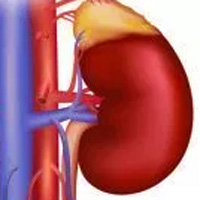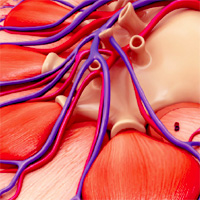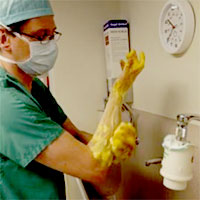
Use of the Confusion Assessment Method in Multi-center Delirium Trials
Delirium occurs commonly in older adults and is associated with adverse outcomes. Multi-center clinical trials evaluating interventions to prevent delirium are needed. The Confusion Assessment Method (CAM) is a validated... read more

The Evolution of Lung Protective Ventilation in ARDS
Dr. Jesus Villar is Group Chief of the Center for Biomedical Research in Respiratory Diseases in Madrid and Senior Scientist of the Research Unit at the Hospital Universitario Dr. Negrin in Las Palmas, Spain. He is the Coordinator... read more

Loss of Sphingosine 1-Phosphate in Septic Shock is Predominantly Caused by Decreased Levels of HDL
Sphingosine 1-phosphate (S1P) is a signaling lipid essential in regulating processes involved in sepsis pathophysiology, including endothelial permeability and vascular tone. Serum S1P is progressively reduced in sepsis patients... read more

A Pilot Study Evaluating the Effect of Cooler Dialysate Temperature on Hemodynamic Stability During Prolonged Intermittent RRT in AKI
Acute kidney injury (AKI) requiring renal replacement therapy (RRT) is associated with high morbidity and mortality. Complications of renal replacement therapy include hemodynamic instability with ensuing shortened treatments,... read more

CRRT for Sepsis-induced Acute Kidney Injury
Sepsis-induced acute kidney injury (SI-AKI) represents the first cause of AKI in ICUs, and renal replacement therapy (RRT) is frequently applied in advanced AKI stages. The debate between 'rescue' indications for RRT start... read more

Evidence Backs Giving Probiotics with Antibiotics
So much of what we're told to do calls for sweeping practice changes or titanic additions to our routine approach. My own articles have advocated for tremendous shifts in typical techniques, and one need not look far to find... read more

No-Shitters, Boldface, and the Resus QRH
In an amazing lecture; Joe Novak, ED doc and former combat aviator; spoke about the need for memorized boldface actions and then the availability of a quick reference handbook (QRH) for the next steps. But where are either... read more

Optimizing Beta-Lactam Treatment in the ICU
The French Society of Pharmacology and Therapeutics (SFPT) and the French Society of Anesthesia and Intensive Care Medicine (SFAR) have released guidelines on the optimization of beta-lactam treatment in intensive care unit... read more

Repeated Ambulance Use is Associated with Chronic Diseases
There is a growing demand for emergency medical services (EMS) and patients are repeatedly transported by ambulance services. For many patients, especially those with chronic disease, there may be better ways of delivering... read more

Critical Care Nursing – Diagnosis and Management
Get a firm understanding and mastery of the unique issues and procedures involved in critical care nursing with Critical Care Nursing: Diagnosis and Management, 8th Edition. Praised for its comprehensive coverage and clear... read more

Antibiotics for Sepsis – Finding the Equilibrium
Sepsis is medicine’s last remaining preserve for unrestrained antibiotic prescribing. The Surviving Sepsis Campaign guidelines recommend empirical broad-spectrum therapy within one hour of triage for both sepsis and septic... read more

Low Hand Hygiene Compliance in ICUs
Healthcare workers in intensive care units (ICUs) are regularly missing opportunities to clean their hands during the care of patients, despite its critical importance for infection control, according to new research being... read more

Going Into Hospital Far Riskier Than Flying
Millions of people die each year from medical errors and infections linked to health care and going into hospital is far riskier than flying according to World Health Organization. If you were admitted to hospital tomorrow... read more

Catheter Type in Pulmonary Embolism Intervention
Catheter based interventions for pulmonary embolism is on the rise. The rise in mainly in patients who present with submassive PE. The intent of intervention is to reduce clot burden. This is done to improve acute symptoms... read more




